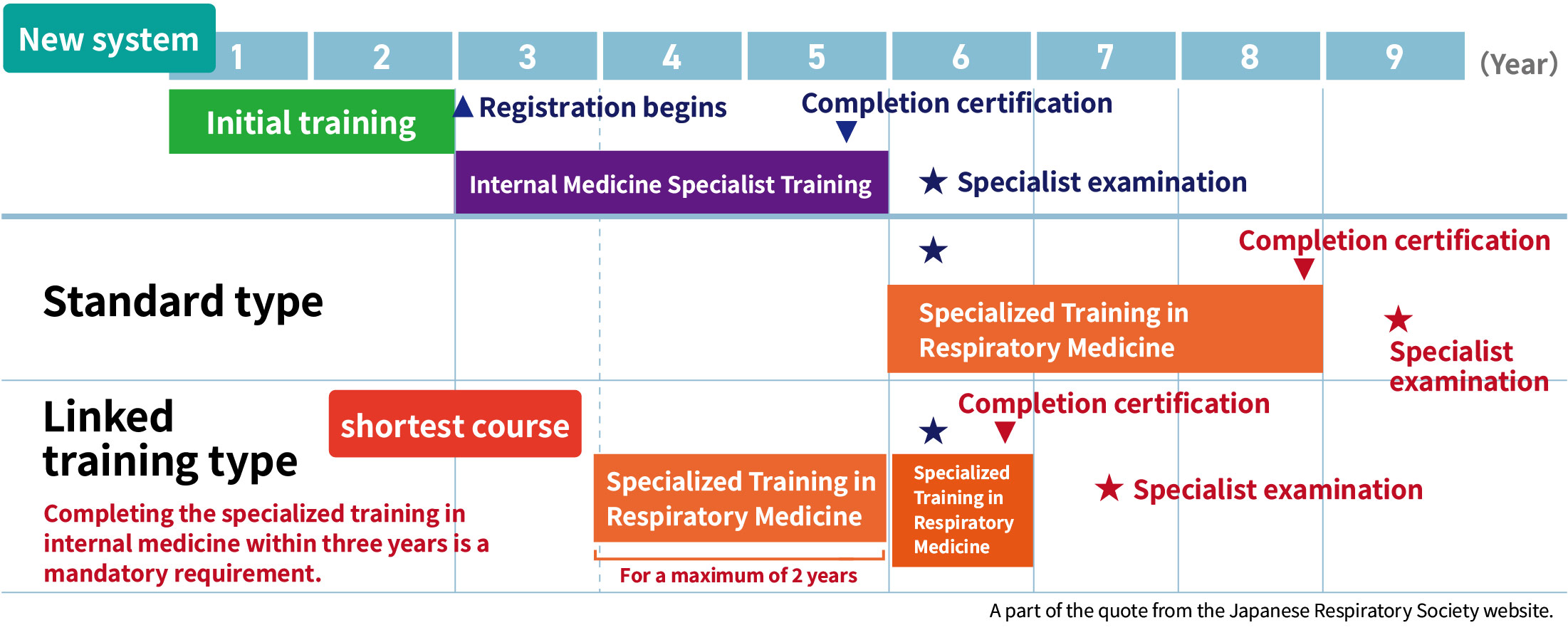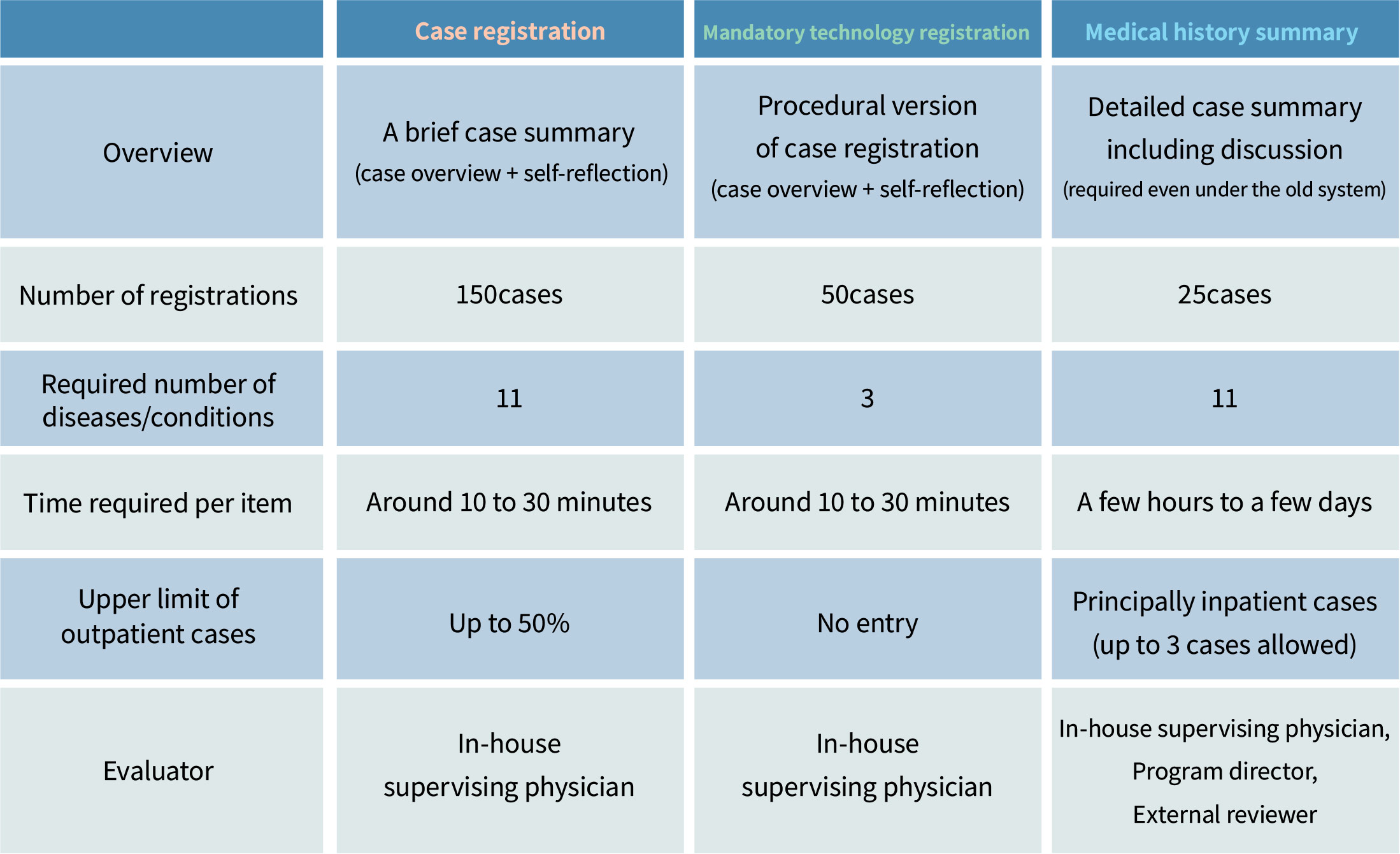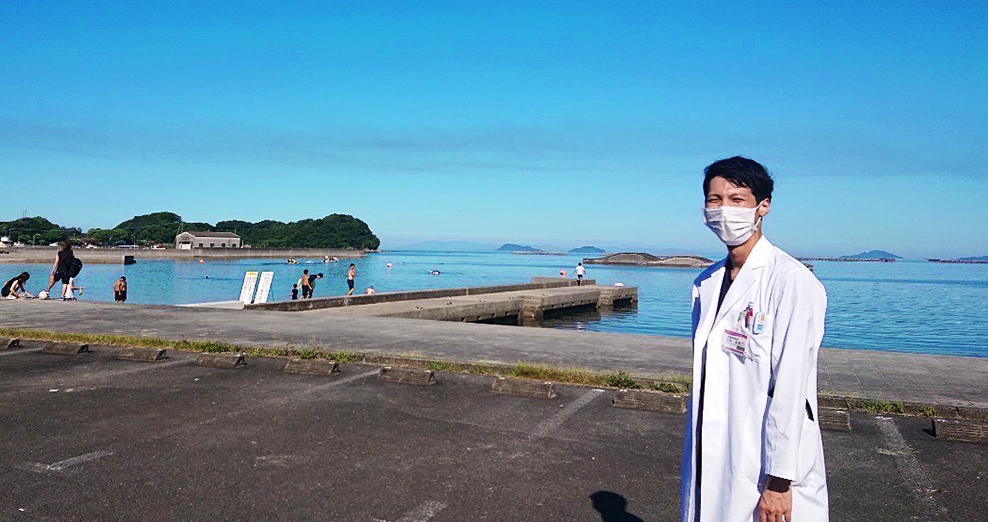Path to Internal Medicine and Pulmonary Certification
Regarding Postgraduate Training After Initial Residency
2The new Internal Medicine specialist system began in 2018, and doctors who obtained their medical licenses after 2016 will acquire their specialty certification under this new system.
The University of Oita Hospital serves as the core facility, and training is conducted in collaboration with affiliated hospitals such as Oita Prefectural Hospital, Oita Red Cross Hospital, Oita Medical Center, Shin Beppu Hospital, and Beppu Medical Center.
By combining linked training programs during internal medicine specialist training, it is possible to obtain the pulmonary specialist certification by the 7th year of the physician’s career at the earliest.

In order to obtain the pulmonary specialist certification, the following conditions must be met, including 200 cases registered in J-OSLER-Pulmonary and 29 medical history summaries:
- ① Obtain Internal Medicine Specialist Certification
- ② Register as a member of the Japanese Respiratory Society (pay the membership fee up to the application year)
- ③ Smokers must quit smoking
- ④ More than 3 years of pulmonary specialist training (including linked training)
- ⑤ Case registration: Cover all 12 diseases/conditions, with 150 cases, and register 50 cases for mandatory techniques
- ⑥ Medical history summary: 25 summaries
- ⑦ ublish 3 papers related to pulmonary medicine and present at 3 pulmonary-related conferences (+ participation in at least two internal medicine or respiratory academic meetings or programs per year)
- ⑧ Attend clinical respiratory function workshops (must be attended before the year of taking the specialist exam)
- ⑨ Biannual training evaluations (self-evaluation, supervisor evaluation, program evaluation)
- ⑩ Submit transfer-in and transfer-out forms before changing facilities, and change the supervising physician after changing facilities
Here, we will provide details regarding ⑤ case registration and mandatory technique registration, as well as ⑥ medical history summaries.

At the core facility, the University of Oita Hospital, and affiliated hospitals, a wide range of diseases can be experienced.

※At the site of home care visits
Thoughts on obtaining the specialist certification in the shortest time
R.H.
(Initials notation)
Graduated in 2016
Thanks to the guidance of the professors in the medical department, I was able to obtain both the new Internal Medicine and Pulmonary Medicine specialist certifications in the shortest time possible. In addition to case registration, there were ample opportunities for presentations and paper writing, so I didn’t face much difficulty. Also, since I entered the University of Oita School of Medicine through the regional admission quota, I was concerned that my sub-specialty certification might be significantly delayed. However, with the support of the department, I was able to obtain my pulmonary specialist certification in the shortest time possible. The strengths of the program centered around the University of Oita, in terms of obtaining the specialist certification, include comprehensive preparation for the J-OSLER-Pulmonary and the specialist exam, ample opportunities for presentations and paper writing, and strong support from the department.
Please note that the requirements for the Internal Medicine and Pulmonary Medicine specialist certifications may change from time to time. Be sure to check the latest information on the websites of the Japanese Society of Internal Medicine and the Japanese Respiratory Society.
